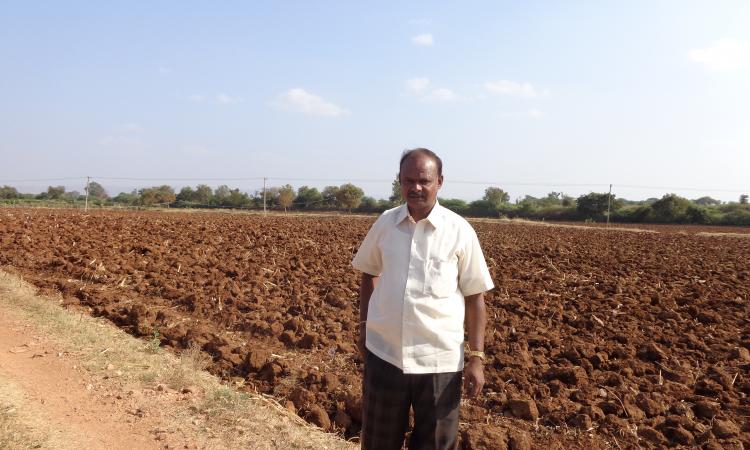
Chitradurga district in Karnataka receives the lowest rainfall in the state. According to the Drought Monitoring Board, most borewells are dry and where there is water, its quality is poor. According to Chitradurga-based Devaraja Reddy who is a hydrogeologist,150-200 borewells were drilled in 2013, with an unfortunate success rate of 2%. He says “Most people want a quick method of obtaining water and therefore keep drilling borewells and spend a lot of money on it, but hardly get anything in return”. Instead, if they focussed on rainwater harvesting and borewell recharge, he believes that it will lead to a decrease in Total Dissolved Solids (TDS), pH and improved water quality.
To prove his point, Reddy approached a long-time contact Basavaraj, an organic farmer in Chitradurga to recharge the borewells on his farm. Reddy, who had identified the first borewell point at Basavaraj's farm, had earlier tried to convince him to install recharge structures, but Basavaraj was relunctant. "Only when his borewell dried up did he finally agree to recharge it", says Reddy.
Even after Basavaraj was convinced about the recharge system, he was on the receiving end of many comments and jabs from peers and relatives about how this system would fail, while it was still being constructed. Thankfully, Basavaraj was adamant to complete the recharge, and now says that it was his best decision ever.
The process of recharging
Earth excavation is the first step in the recharge process. Soil is excavated within the dimensions of 3x3x3 metres. Locally available construction material for the recharge pit is then collected. Small-sized holes are drilled into the bore pipe (100-120 holes per system). A filteration system of three layers, consisting of aquamesh (made of high density polyethene), nylon mesh and a sand filter then covers the pipe.
Layers of the pit are then added in this order - big boulders, small-sized boulders, big pebbles, small pebbles and then lastly, coarse sand on top. Once the pit is filled, a parapet wall is constructed around the pit along with a channel that connects the catchment area to the recharge pit. One important criteria for building a recharge pit is that the field must have a catchment area of at least 2 acres. "There are about 20 different designs of recharge pits, but this is the typical design used most commonly", says Reddy.
Basavraj's borewells: dimensions, cost and funding
The first borewell constructed on Basavaraj's field is 13 years old and 260 feet deep. The second one is 2 years old with a depth of 288 feet. The recharge process, overall takes 8-10 months, but Basavaraj says it is totally worth the wait. The catchment for both borewells is hilly in nature (via gravity flow) and extends more than 2kms and aids the recharge process during the intermittent rains.
The recharge system for the first borewell on Basavaraj’s field was constructed with his own money, without external funding. The total expenditure was Rs. 35,000. However, Reddy, who is associated with IFFCO (Indian Farmers Fertilizer Cooperative), leveraged a borewell recharge scheme for Basavaraj. The scheme helps farmers construct such systems by providing 25% of the total expenditure.
He grows banana, maize, jasmine, coconut, ragi, cotton and chrysanthemum among others on his 23 acre piece of land. In addition to the rains, borewells - one recharged and the other in the process of being recharged - irrigates the fields. He also grows areca nut along with banana through the intercropping method. Areca nut is a very water- intensive crop requiring 5 litres of water per plant, every alternate day. Basavaraj has 3400 areca nut plants on his field. He also has 2400 banana plants, which require twice as much water. He says that this has only been possible due to the borewell recharge on the field.
Basavaraj’s success has motivated a number of people in the area to also recharge their borewells, including two family members. He hopes to inspire many more farmers in Chitradurga given the acute water shortage they face.